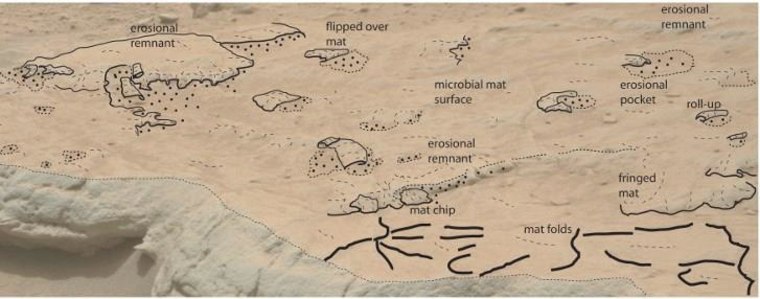Intriguing features photographed by NASA's Curiosity rover on Mars probably don't have a biological origin, mission team members say.
An outside researcher recently analyzed photos that Curiosity took of an ancient sedimentary outcrop called Gillespie Lake, and noted some similarities to "microbially induced sedimentary structures" here on Earth.
Study author Nora Noffke, a geobiologist who is not a member of the Curiosity team, said the Gillespie Lake features could be consistent with a biological origin, but she stressed repeatedly that this was just a hypothesis, and that she didn't regard the structures as proof of past Mars life.

Curiosity team members also noticed the Gillespie Lake structures, which include domes, cracks and pockets, among other shapes, said mission project scientist Ashwin Vasavada of NASA's Jet Propulsion Laboratory. But the rover team arrived at a different interpretation. [The Search for Life on Mars: A Photo Timeline]
"We really didn't see anything that can't be explained by natural processes of transporting that sand in water, and the nature of the rocks suggested that it was just a fluvial sandstone," Vasavada told Space.com.
"We do have several members of our team who are always keen to look out for things that might be caused by biological processes, but there was no reason, we felt, to explore that at that site," he added. "It came down to nothing exceptional, from our point of view, that wasn't just a consequence of erosion of this sandstone."
Vasavada stressed that he and the rest of the Curiosity rover team welcome analyses by outside researchers such as Noffke.